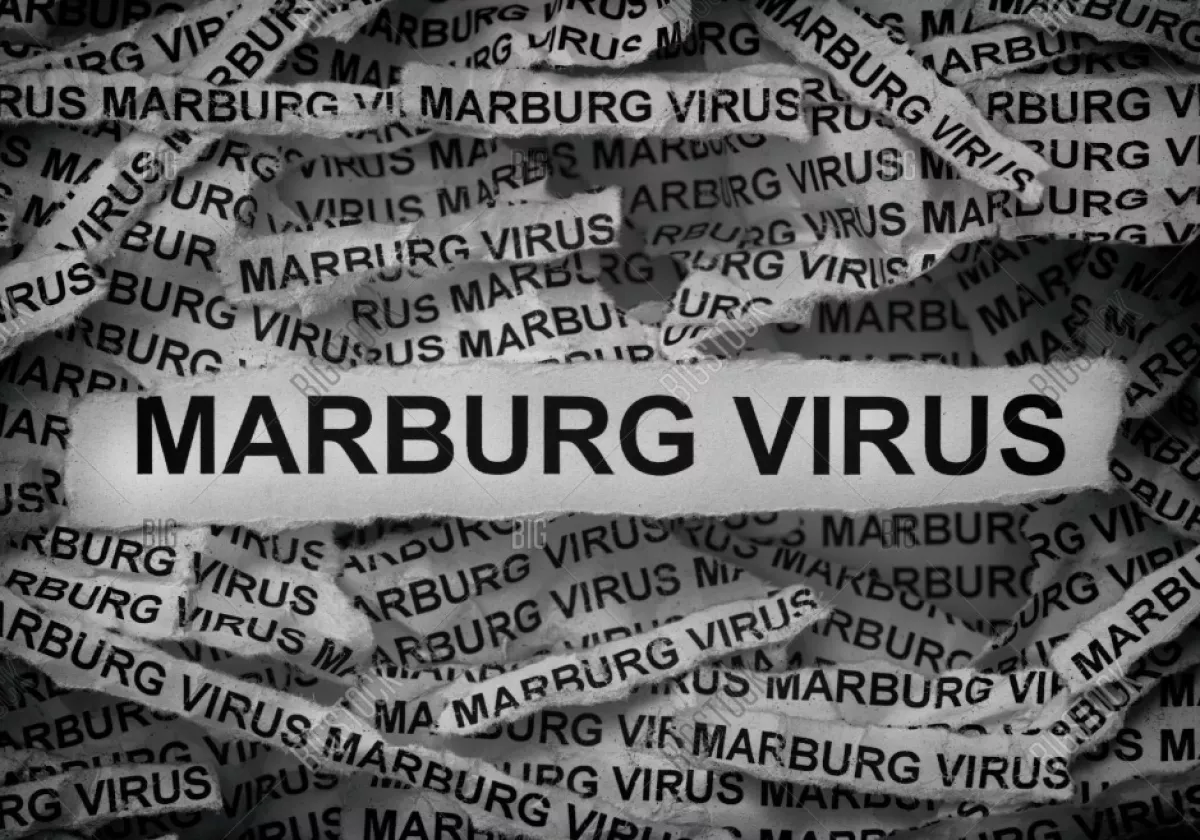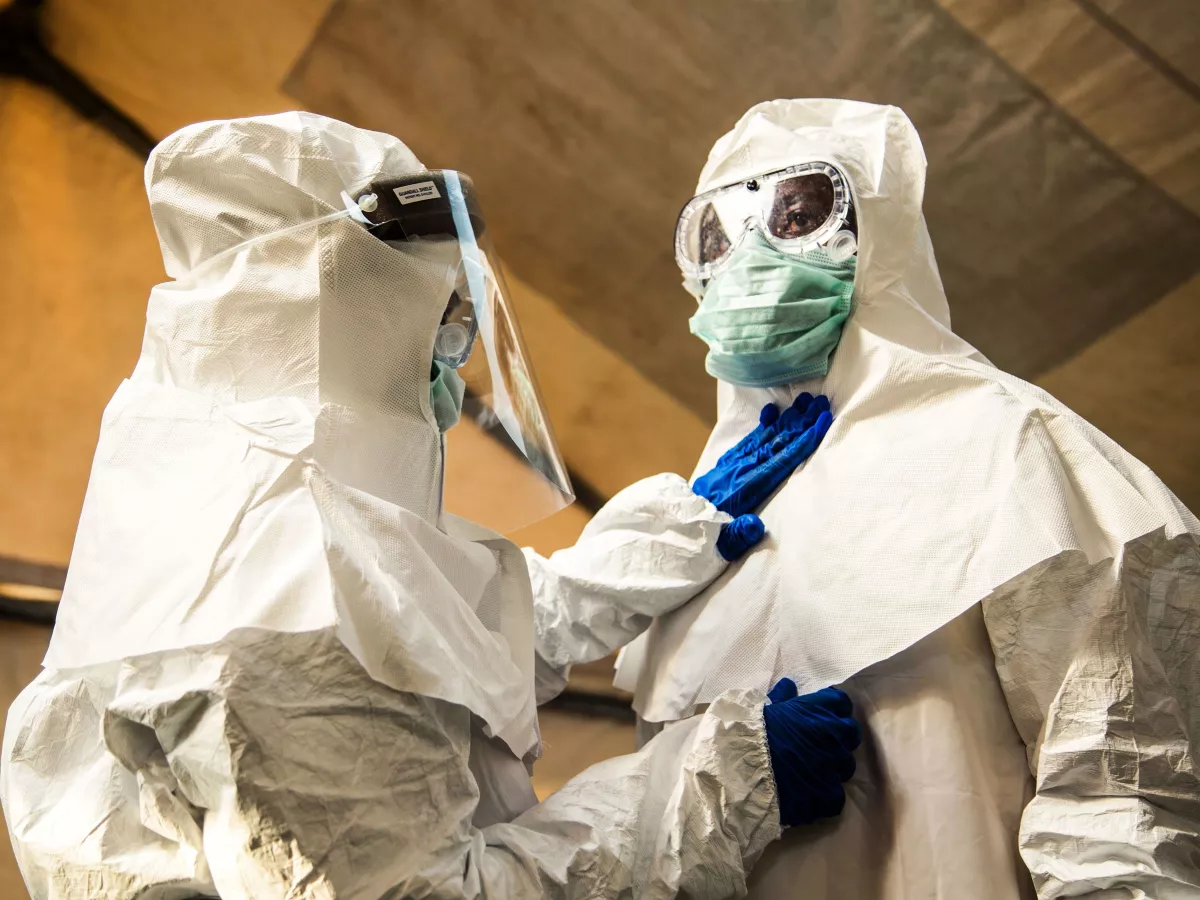Marburg virus: Biological weapon leak or nature's revenge? Vaccine dilemma
The media is once again sounding the alarm—dangerous diseases are re-emerging on the African continent. Who or what can protect African nations from these killer viruses?
Haemorrhagic fever
On September 28, reports emerged of an outbreak of the Marburg virus in Rwanda. According to the World Health Organization (WHO), there were 26 confirmed cases in the country that day, resulting in 6 fatalities. Just two weeks later, the number of infected individuals had more than doubled. By October 13, 62 people had contracted the virus, with 15 deaths reported. The WHO has declared a public health emergency at the highest level—Level 3. Neighbouring countries, including the Democratic Republic of the Congo, Tanzania, and Uganda, are also at risk.
The illness begins suddenly, marked by a high fever—reaching up to 40 degrees Celsius—along with severe headaches and muscle pain. By the third day, patients may experience intense and bloody diarrhoea, abdominal pain, nausea, and vomiting. The body may develop red and purple spots. Within a week, complications can include liver and kidney damage, pulmonary oedema, and central nervous system injury. One alarming symptom is confusion and aggression, which poses risks to caregivers. Among the most severe consequences is a reduction in circulating blood volume, leading to bleeding and significant haemorrhaging. In this respect, the Marburg virus is similar to Ebola hemorrhagic fever, as both are closely related filoviruses.
The natural hosts of the Marburg virus are fruit bats—specifically, Egyptian fruit bats, also known as "flying foxes." The virus is transmitted from these bats to humans. Flying foxes inhabit caves and abandoned mines but primarily feed on fruit, which can also lead to the virus entering the human body.
Fortunately, the infectivity of the Marburg virus is not as high as that of the coronavirus. It is mainly transmitted through blood, semen, saliva, urine, faeces, and vomit. Media reports suggest it may also spread through respiratory droplets when it comes into contact with mucous membranes in the eyes or through cuts on the skin. However, experts contend that transmission occurs only through direct contact. The lethality of the Marburg virus is extremely high, with mortality rates ranging from 24% to 100% among those infected.

Experts also warn that the Marburg virus, like all RNA viruses, can actively mutate, leading to the emergence of new strains with increased contagion or infectivity. The challenge in preventing and treating the Marburg virus is compounded by its difficulty in diagnosis, with an incubation period that can last up to 21 days.
There are growing concerns that the virus could spread to Europe. At least one healthcare worker returning to Germany from Rwanda was hospitalized with suspected Marburg virus infection; however, this suspicion was later disproven. Additionally, it has been reported that one contact of an infected individual travelled to Belgium, prompting the implementation of appropriate measures. There have also been claims that in October of this year, a Ukrainian serviceman allegedly brought the Marburg virus into Ukraine.
Journey of a vaccine
Until recently, there was no specialized treatment for the Marburg virus; the same supportive care used for Ebola was applied. However, on October 15, the World Health Organization (WHO) announced that clinical trials for the world's first Marburg virus treatment had begun in Rwanda. The effectiveness and safety of remdesivir—previously used against COVID-19—and specialized antibodies targeting the Marburg virus are currently being tested.
As of the onset of the Marburg outbreak, the WHO reported: “there is no licensed vaccine currently available to effectively combat Marburg virus disease.” While there are several vaccine candidates that have not yet received official approval, over the past weekend, Rwanda began administering an experimental vaccine to its population. It has not been disclosed whether this vaccine is licensed.
The story of vaccine development for the Marburg virus is quite notable. Various DNA vaccines have been tested on mice, monkeys, and humans, especially during and after the Ebola outbreaks. Research has shown that while most of these vaccines increased the body’s resistance, they did not provide complete immunity.
Perhaps the most promising candidate is the experimental vaccine rVSV-MARV, developed by the Public Health Agency of Canada (PHAC) in the early 2000s. Initial trials on macaques demonstrated that this vaccine provided the necessary immune protection. However, in 2010, the Canadian government agency unexpectedly sold rVSV-MARV, along with the vaccine for the related Ebola filovirus, rVSV-ZEBOV, to NewLink Genetics for just $205,000. NewLink was funded by the U.S. Department of Defense's Threat Reduction Agency.
Ultimately, this small company, which previously focused on cancer vaccines, was unable to ramp up production of vaccines for filoviruses. Why? It is believed that private companies lack commercial interest in producing vaccines for diseases that have not yet caused significant fatalities.
However, in 2014, a massive Ebola outbreak unfolded in West Africa. During this crisis, Amir Attaran, a professor at the University of Ottawa, urged the Canadian government to revoke the license from the American company and transfer it to a larger developer. Ultimately, the pharmaceutical giant Merck Group purchased the vaccines that had previously been sold for $200,000 for a staggering $50 million. This transaction raised eyebrows in several media outlets, which labelled the story of the vaccine's sale and resale as peculiar.
The situation is further complicated by the fact that just before the Ebola outbreak, in 2013, the Canadian government and the Department of Defense had ordered over 1,500 vials of an experimental vaccine from the German firm IDT Biologika, spending $887,000 on it. However, it was only after several months of the Ebola epidemic, as global tensions mounted, that these vials were handed over to the WHO for human trials.
While the Ebola vaccine rVSV-ZEBOV has been approved by the WHO, the European Commission, and the United States after years of testing, a certified vaccine for the Marburg virus has yet to emerge. Merck discontinued the development of the rVSV-MARV vaccine, reportedly due to commercial impracticality. However, Merck did return the rights to these vaccines to the Public Health Agency of Canada. Despite this, all knowledge regarding the development and production methods of rVSV-MARV that Merck had acquired remains proprietary to the company and cannot be utilized by others.
Experts believe that this situation has significantly hindered the development of an effective vaccine against the Marburg virus.
Dark retribution of tropical forests
In Rwanda, this marks the first case of the Marburg virus, with 70% of the infected and deceased being healthcare workers from two clinics in the capital, Kigali. Today, there is no shortage of conspiracy theories surrounding the epidemics, vaccination efforts, and the activities of global companies and organizations.
In relation to the recent Marburg virus outbreak, there are speculations that it may be connected to the operations of the US Army Medical Research Directorate-Africa (USAMRD-A), headquartered in Kenya. This division of the US Department of Defense conducts research on viruses, including in the context of potential biological warfare.

However, one concerning trend is emerging. The Marburg virus, first identified in the city of the same name in 1967, had only isolated cases until 1998. Since then, outbreaks have become increasingly severe in scale and mortality. From 1998 to 2000, 153 people were infected with the Marburg virus in the Democratic Republic of the Congo, with 128 fatalities. In Angola, between 2004 and 2005, there were 422 confirmed cases of the Marburg virus, resulting in 356 deaths. In the past year, 2023, outbreaks of Marburg with fatal cases occurred in Tanzania and Equatorial Guinea.
First and foremost, these trends result from the unchecked exploitation of the African continent by Western capital, where increasing urbanization is not accompanied by a corresponding development in the social sector, particularly healthcare. Overcrowding and unsanitary conditions in the rapidly growing slums create a constant pandemic threat, while the rise in international transportation increases the risk of rapid viral infection spread on a global scale.
Additionally, deforestation and land development are leading to more frequent contact between humans and wildlife infected with deadly tropical viruses. The WHO and medical professionals in Guinea determined that the first case triggering the Ebola epidemic in 2014 occurred in the village of Méliandou. There, a 1.5-year-old boy played near a tree hollow teeming with bats. Two days later, the child died, followed by relatives who had contracted the virus from him.
Over the past two decades, the incidence of zoonotic diseases—particularly Ebola and Marburg viruses—has increased by 63% in sub-Saharan Africa. The weak healthcare systems in African countries are struggling to cope with this burden. Shortly before the current Marburg virus outbreak in Rwanda, neighbouring Democratic Republic of the Congo experienced a monkeypox outbreak, with 30,000 cases reported since the beginning of the year and approximately 1,000 deaths, 70% of which were children under five. A few cases of monkeypox have also been recorded in Rwanda.
Regarding the threat of the Marburg virus spreading to other countries, the likelihood of an outbreak occurring in Europe is extremely low. However, the risk of this infection spreading throughout African nations remains high unless comprehensive measures are taken to contain it with international support. Currently, the Rwandan government claims to have brought the situation regarding the virus under control.
Global corporations are ruthlessly exploiting the continent's resources, yet there is little interest in developing the economies and healthcare systems of African countries. Major pharmaceutical companies often use the African continent as an experimental ground or as a source of “black propaganda” regarding pandemic challenges. In the absence of systematic prevention measures, the production of vaccines and medicines often begins only in the midst of epidemics, after many lives have been lost. Corporations are reluctant to invest in research and development that cannot yield quick and substantial profits.
" The WHO classifies MVD as a neglected tropical disease, owing to its neglected research, funding, and attention status as compared to other infectious diseases. Lack of commercial incentives for drug development and limited investments in MVD vaccine development have hindered the progress," states a report by a group of independent scientists from Global South countries, published shortly before the current outbreak of the Marburg virus.
One thing is clear: victory over dangerous infectious epidemics in Africa, as well as the eradication of poverty and many other issues, can only be achieved through genuine decolonization of the continent. This requires a united effort from Global South countries to establish a new, equitable international order.








